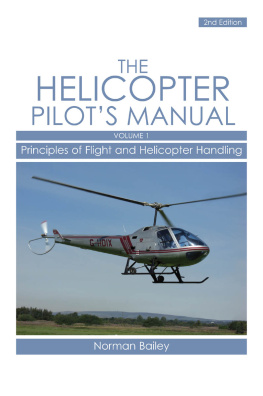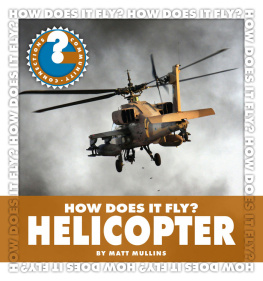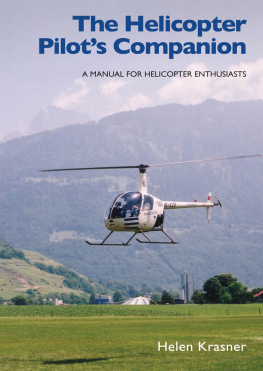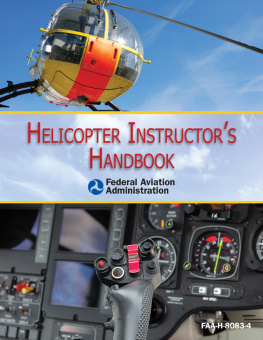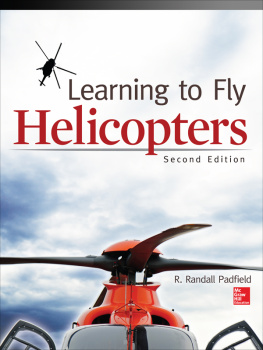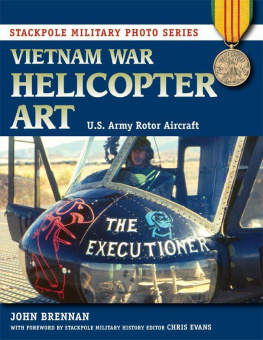Also available:

THE
HELICOPTER
PILOTS MANUAL
VOLUME 1
Principles of Flight and Helicopter Handling
Norman Bailey

THE CROWOOD PRESS
First published in 1996 by
Airlife Publishing, an imprint of
The Crowood Press Ltd
Ramsbury, Marlborough
Wiltshire SN8 2HR
www.crowood.com
This e-book first published in 2014
New edition 2008
Norman Bailey 1996 and 2008
All rights reserved. No part of this publication may be reproduced or transmitted in any form or by any means, electronic or mechanical, including photocopy, recording, or any information storage and retrieval system, without permission in writing from the publishers.
British Library Cataloguing-in-Publication Data
A catalogue record for this book is available from the British Library.
ISBN 978 1 84797 923 0
C ONTENTS
I NTRODUCTION
The whole process of learning to fly helicopters will be much easier if first you take the time to read about and understand the basic aerodynamic forces that act on a helicopter.
Helicopters lack the aerodynamic control feedback and built-in stability of fixed-wing aircraft. Flying them draws on a pilots kinaesthetic senses and ability to extrapolate in four dimensions in real time. This is not something that can be learned overnight, but this book should help you progress more quickly through your initial training.
Few other books offer this combination of helicopter aerodynamic theory and practical hands-on advice in such an easy-to-read style. The first edition proved very popular and now is used by most helicopter training schools because of its simplified approach to learning to fly helicopters.
This new edition provides an update on current training rules and exercises while retaining the easily understood style.
Good luck with your flight training, and I hope you have many safe and enjoyable hours of helicopter flying.
Norman Bailey, DFM
1 T HE P RINCIPLES O F
H ELICOPTER F LIGHT
Helicopters and other related rotary-wing aircraft are widely varied in their concept and configuration. This book concerns primarily the single-rotor helicopter, of the type that employs a compensating tail rotor.
Although the aerodynamics of the helicopter are based on the same laws that govern the flight of a fixed-wing aircraft, the significance of some considerations is somewhat different.
Both rely on lift produced from air flowing around an aerofoil, but whereas the aeroplane must move bodily forward through the air, the helicopters rotors (wings) move independently of the fuselage and can produce lift with the aircraft remaining stationary (hovering).
Both autogyros and helicopters have rotating wings (rotor blades), but those of the autogyro are not driven. Instead, they rotate freely in flight under the single influence of the airflow. The helicopters rotor blades are engine driven in powered flight, giving it the ability to hover.
Before considering the principles of helicopter flight, it is necessary to explain some terms and definitions.
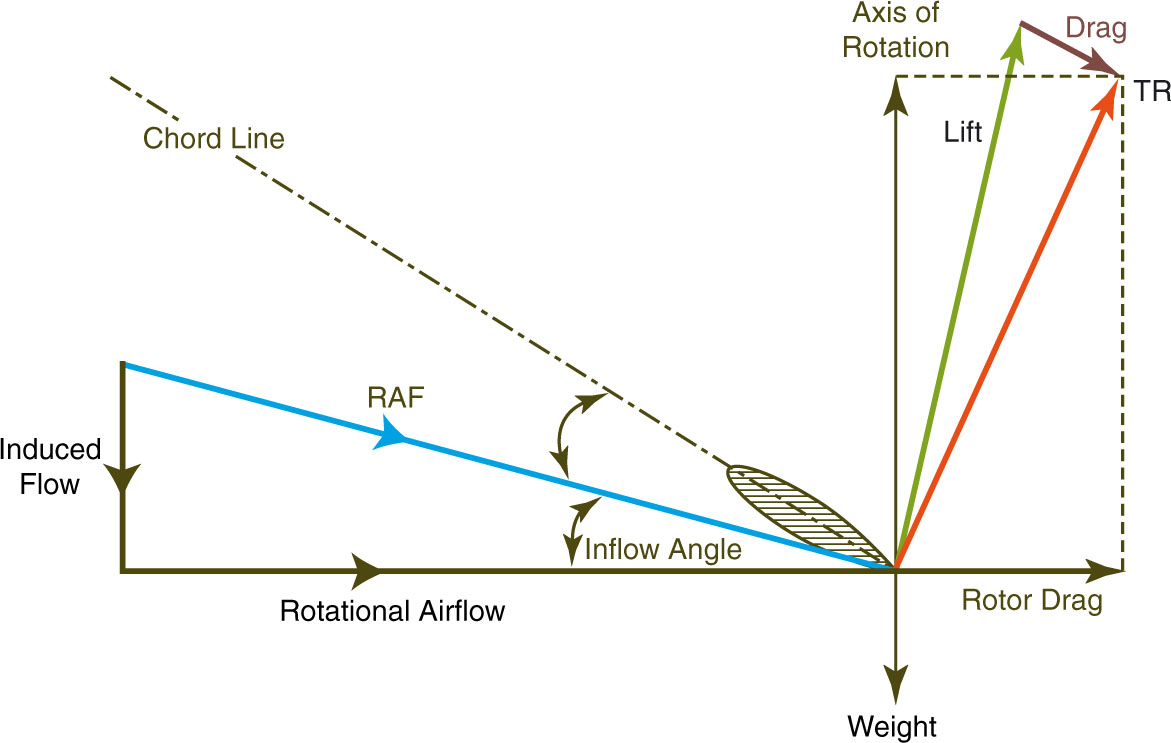
The principles of helicopter flight.
Aerofoil (Airfoil in USA) An aerofoil is any surface designed to produce lift when air passes over it. On a helicopter, the rotor blades are the aerofoils and normally are classed as symmetrical, because the blades upper and lower surfaces have the same curvature.
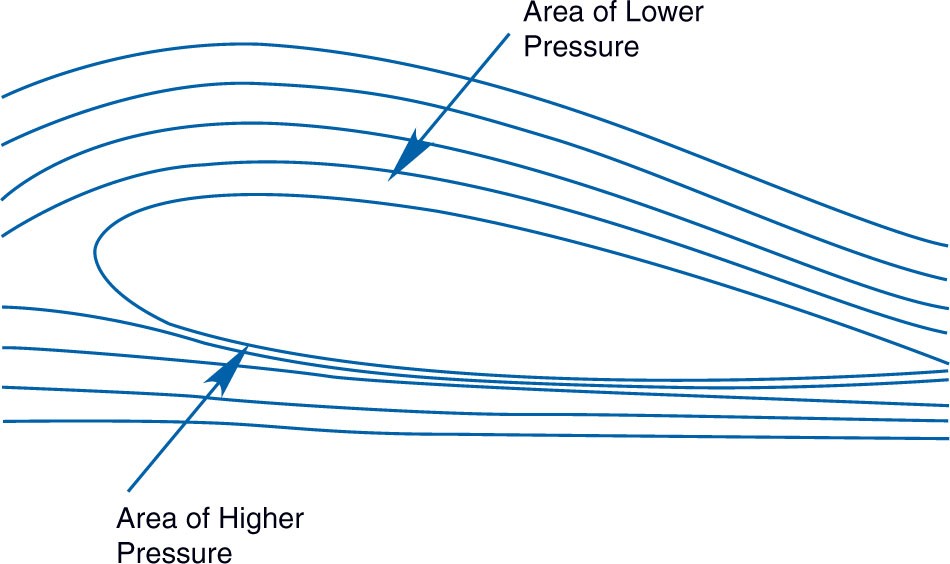
Aerofoil section.
Chord line This is an imaginary line joining a rotor blades leading and trailing edges.
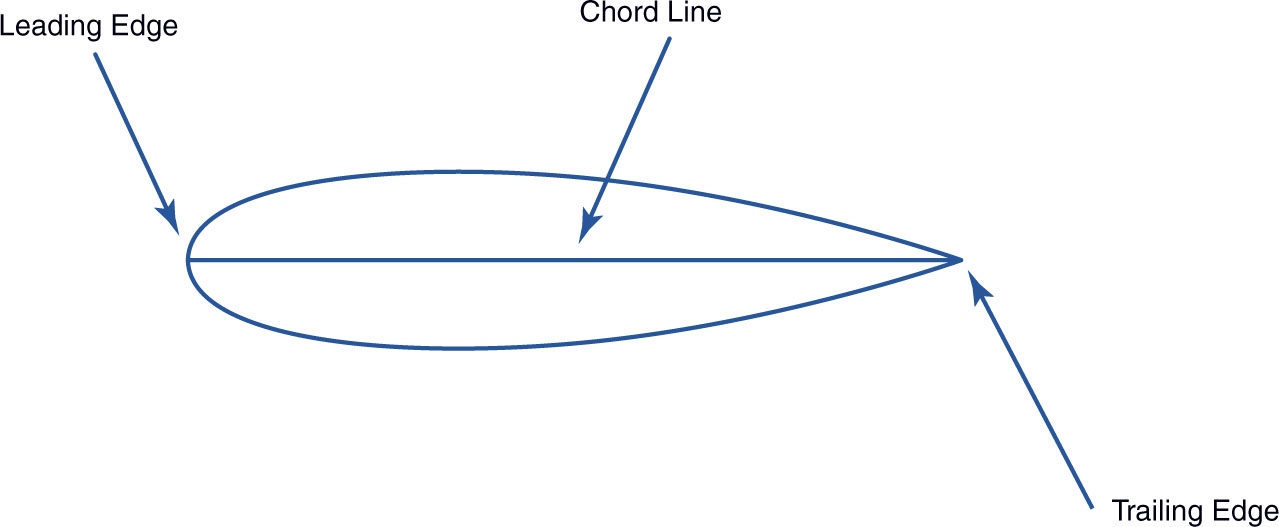
The chord line.
Axis of rotation An actual or imaginary line about which a body rotates.
Plane of rotation This is normal to the axis of rotation and parallel to the rotor tip-path plane. It is at right angles to the axis of rotation.
Tip-path plane The path described by the tips of the rotor blades as they rotate.

The tip-path plane.
The rotor disc The area contained by the tips of the rotor blades.
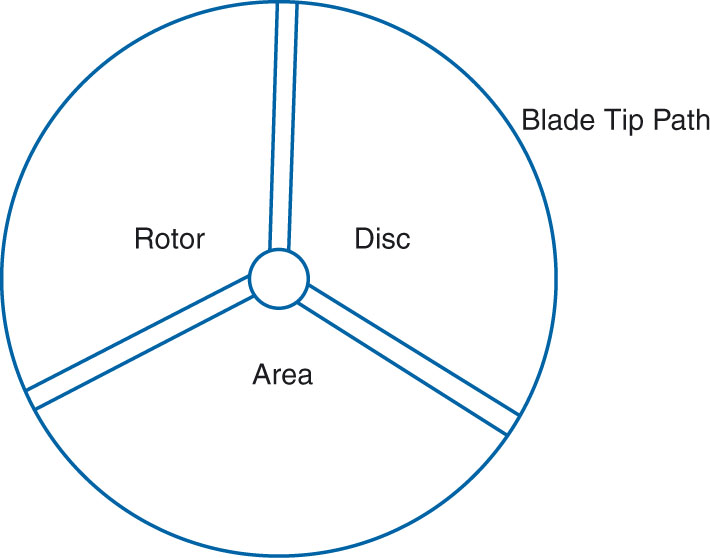
The rotor disc.
Pitch angle The angle between the chord line and the plane of rotation.
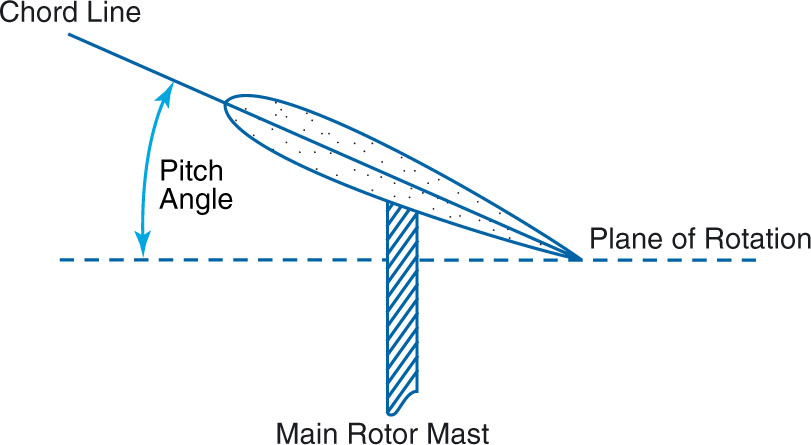
The pitch angle.
Coning angle The angle between the spanwise length of a rotor blade and its tip-path plane.
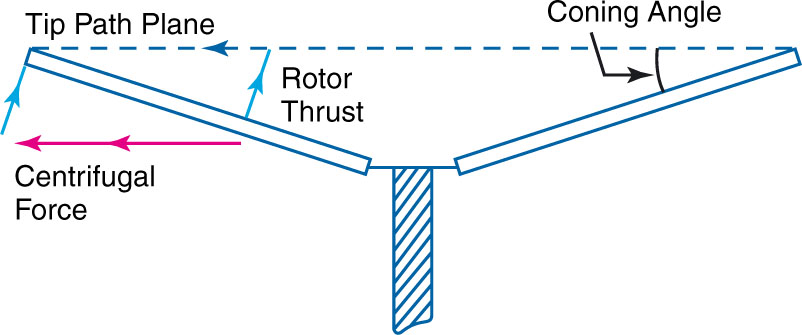
Coning angle.
Coning Movement of the rotor blades aligning them along the resultant of centrifugal force and lift. An increase in lift would increase the coning angle; conversely, an increase in rotor rpm would decrease the coning angle.
Feathering The angular movement of a rotor blade about its longitudinal axis.
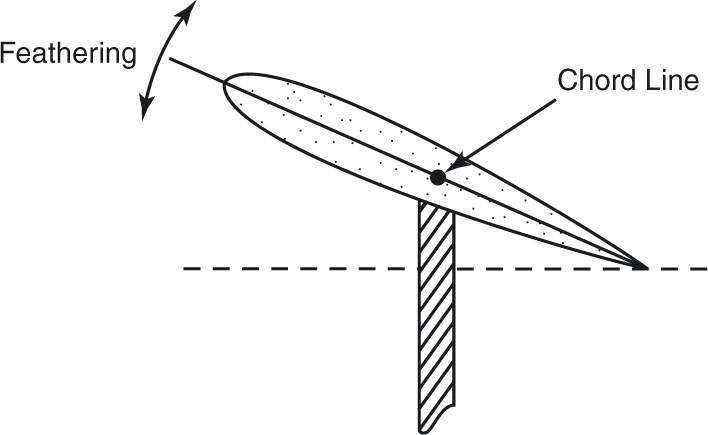
Feathering.
Flapping The angular movement of a rotor blade about a horizontal axis. In fully articulated rotors, the individual blades are free to flap about their flapping hinge.
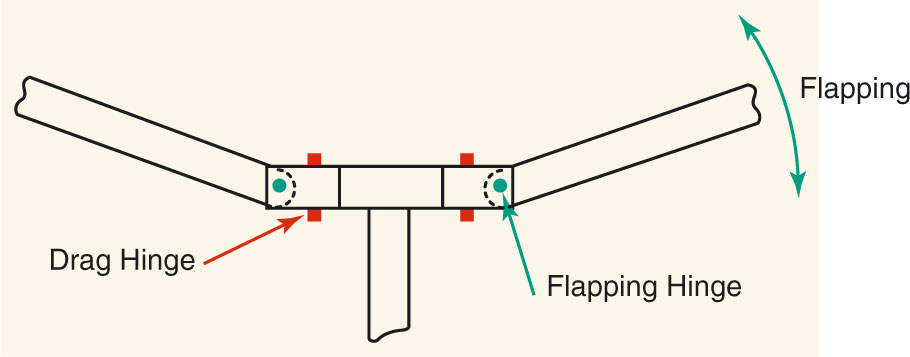
Flapping.
Dragging The angular movement of a rotor blade about an axis vertical to that blade. The dragging hinge is only incorporated in fully articulated rotor systems.

Dragging.
Angle of attack The angle between the chord line and the relative airflow.

Angle of attack.
Total rotor thrust The sum of lift of all the rotor blades.
Disc loading The ratio of weight to the total main rotor-disc area.
Solidity ratio The ratio of the total blade area to the total disc area.
THE LIFTING FORCE OF THE ROTOR
Lift
To understand how lift is created, first we must review the basic principle of pressure differential. This was discovered by a Swiss physicist, Daniel Bernoulli. Simply put, Bernoullis Principle states that as the velocity of a fluid (air) increases, its internal pressure decreases. When a relative wind blows across a rotor blade, the air divides, passing over the top of the blade and underneath it. Essentially, the air blowing across the top moves at a greater speed than that passing below, thereby creating a pressure differential, which results in lift.

